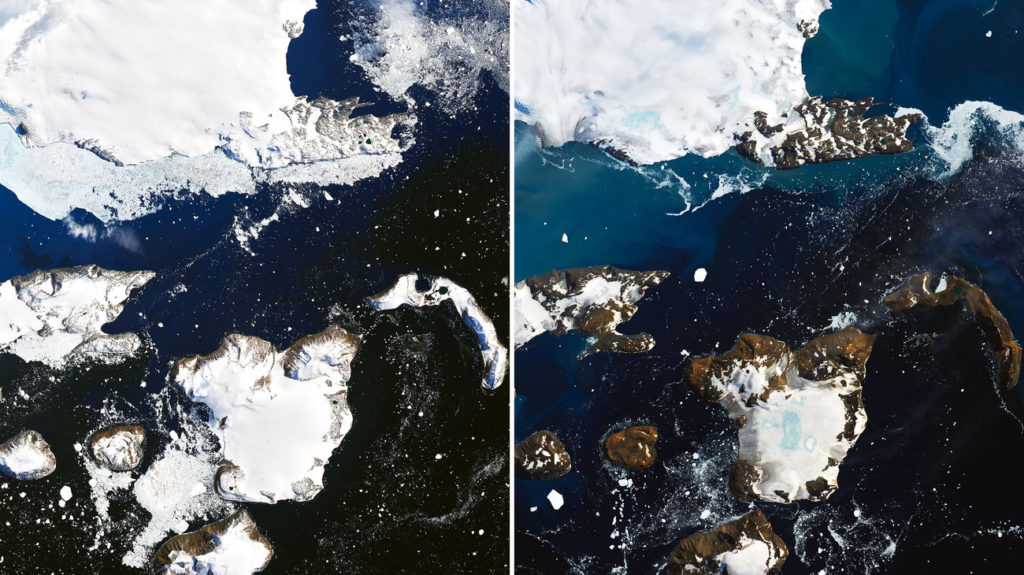Following the recent record high temperatures, NASA released before-and-after satellite images of the northern Antarctic Peninsula – and the lack of snow is breathtaking.

Most of the shocking photos photos were of Eagle Island, located in the northern part of the Antarctic Peninsula. They were taken by satellites nine days apart, on February 4 and February 13. Although little more than a week had passed, the change was visible..
Just two days after the first photo, Eagle Island reached a record of 18.3 degrees Celsius (64.9 Fahrenheit). It was t-shirt weather — the same temperature registered in Los Angeles on that day, according to NASA.
That led to big losses of ice and snow, losing an inch on February 6 and four inches on February 11.
“The warm spell caused widespread melting on nearby glaciers,” the space agency said on a press release. “Such persistent warmth was not typical in Antarctica until the 21st century, but it has become more common in recent years.”
The record temperature in Antarctica was registered at the Esperanza Base, a continuously manned research station managed by Argentina.
It’s no coincidence that Antarctica is experiencing such high temperatures; after all, it is one of the places most affected by climate change.
Between 1979 and 2017, Antarctica has experienced a sixfold increase in yearly ice mass loss — and this rate doesn’t seem to be slowing down. During this period, global sea levels rose by almost 13 millimeters (half an inch), according to a recent study.
Mauri Pelto, a glaciologist at Nichols College, explained in a statement that high temperatures have now become frequent in the area — although this was not the usual weather pattern researchers are used to. In fact, the Antarctic was generally resilient in the face of melting events elsewhere on the globe. “You see these kinds of melt events in Alaska and Greenland, but not here,” he said.
NASA explained that behind the high temperatures were the result of strong winds that traveled to the mountains, where it cooled and condensed into ice or rain. Then, the heat that was released because of the condensation went down to the other side of the mountain.
“Typically, the peninsula is shielded from warm air masses by the Southern Hemisphere westerlies, a band of strong winds that circle the continent,” NASA said. “However, the westerlies were in a weakened state, which allowed the extra-tropical warm air to cross the Southern Ocean and reach the ice sheet.
Alexandra Isern, the head of Antarctic sciences at the National Science Foundation, told NPR the challenge now will be to establish how much of a role climate change played in these record temperatures. “This was a weather event”, she said, adding researchers are now working on figuring out whether the warm weather event in Antarctica’s northern peninsula is also becoming a climate event.









